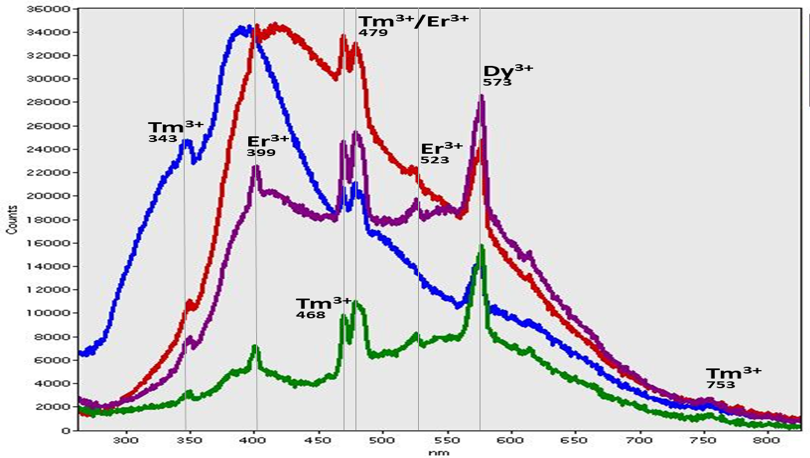
Reservoir rock
The oil and gas industry uses cathodoluminescence (CL) to characterize reservoir rocks.
Rare earth elements (REEs)
The last 20 years have seen an explosion in demand for REEs due to their use in rechargeable batteries, magnets, military-grade metal alloys, and many optoelectronic devices. Minable concentrations of REE-bearing minerals, such as apatite and monazite, are uncommon, and market availability is sometimes restricted.
CL can reveal the presence of and identify REE within a mineral. Based on each REE's distinct emission spectrum, their distribution(s) may be mapped even at concentrations lower than ten parts per million.
Porphyry
Porphyry deposits are one of the world's most important copper, gold, and molybdenum repositories. High-resolution, scanning electron microscope CL mapping allows the detailed interpretation of the crystallization history within porphyry copper ore deposits to be understood.
Gems
Many gemstones, including diamonds and corundum (sapphire or ruby), exhibit strong CL and are widely studied. The inhomogeneous internal structure can reflect changes during growth and post-crystallization. This allows, for example, natural and synthetic diamonds to be distinguished based on their spectrum and a detailed understanding of the various colors they exhibit.